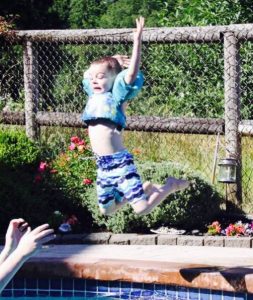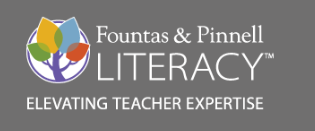
I have two very different children. The ways in which they learn are also very different. My eight year old is cautious, and has needed to be explicitly taught, in a part to whole style. Tasks are broken down in a step by step process. She learns each part, transfers it to the whole, understands and retains it, after much repetition. Although my four year old isn’t reading yet, I can tell he is going to be a whole to part learner – he’s already “reading” by reading the pictures in books, saying words he hears me read, and recognizing a few common sight words.
The way in which my kids have learned to swim has been the exact same, and it’s really made me think about how we teach and assess children in the classroom. Ella, my cautious learner, is a cautious swimmer. Due to some sensory processing issues and low muscle tone, learning to swim has been difficult for her. We have spent hours in the pool with her, done pool physio, and paid for private lessons for years. Every aspect of learning to swim has been broken down into the “parts” and she has slowly been putting the parts into the whole – the action of swimming. She has never been in swimming lessons with other children, except for parent and tot lessons, because the gap was too wide between the ability of her peers and her own ability. After swimming every single day this past summer, and many years of private lessons, we felt that she was ready to take lessons with her peers, but more importantly, she was willing to give it a go.
The gains she made swimming with her peers was extraordinary. By the end of the ten week class, she was swimming, face in the water, and was happy about it. As I watched, I could see the teacher made her feel safe. She did what every good teacher in the classroom does. She was happy to see Ella every Sunday. She modelled what the expectations were. She had Ella swim holding her, and when she was ready, she let her go. Ella had her peers all around her, so she could see what she was supposed to do. If this doesn’t speak to the importance of inclusion, I don’t know what does!
Now, let’s look at my son. He learned to swim this summer by thinking he could do it, so he tried on his own and almost drowned. He came up for air, laughing, and figured out what he had done wrong, adjusted his ways, and was swimming in a matter of minutes.
Ella didn’t pass her class. Jamie did. Ella would have received a failing letter grade, and Jamie would have received an A. But who made the most gains? Ella’s report card was so informative. It listed the things she had done really well, and the areas she needed to work on. She will take the class again. Jamie’s report had check marks all the way down, his comment by his swimming instructor was, “well done!” and that was that.
Ella’s report card stated what we should all be striving for as educators. Ella didn’t need to see a poor letter grade, as many of our striving learners might see. What would that letter grade even have told us? In ten weeks, Ella and her teacher demonstrated what our school year should look like with our students. We need to be like Ella’s swimming instructor – showing our students we are happy they are there, because as the brilliant Sharon Jeroski says, “kids don’t learn from people they don’t like”. We should be encouraging them, and showing them how to improve. We need to make sure our kids feel safe, and our students should be with a community of learners where they are cheering each other on. Our report cards should match this. Ella’s story was in that report card, and as I read it, I cried tears of happiness, because I could see how far my child had come. As Ella handed me her report card, she said, “I’m so proud of myself mom.” I hugged her and didn’t want to let her go.


